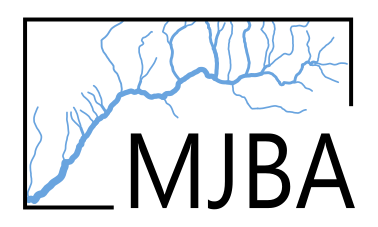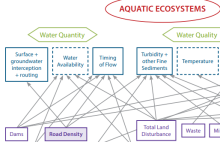Road Density BC-CEF IAP
mbayly
View all records in the stressor response library
Species Common Name
Aquatic Ecosystems
Stressor Name
Road Density
Specific Stressor Metric
Total length of roads divided by the total watershed area (km/km2)
Stressor Units
km/km²
Geography
British Columbia
Key Covariates and Dependencies
Weighted criteria for per unit length of road by surface type (see source documentation)
Detailed SR Function Description
Road Density from WSEP Tier 1 and BC Interim Protocol for Aquatic Ecosystem.
See documentation for core indicators. Road density is a coarse-scale GIS proxy that may exacerbate peak flows and sedimentation. Large body of literature describing the use of Road Density as a proxy for various cumulative effects to watersheds. Many relationships are context dependent.
Conversion from qualitative (low to high) to quantitative (Mean System Capacity Response: 0% - 100%) rankings for Joe Model: Very Low = 100%; Low = 80%; Moderate = 60%; High = 40%; Very High = 20%.
See documentation for core indicators. Road density is a coarse-scale GIS proxy that may exacerbate peak flows and sedimentation. Large body of literature describing the use of Road Density as a proxy for various cumulative effects to watersheds. Many relationships are context dependent.
Conversion from qualitative (low to high) to quantitative (Mean System Capacity Response: 0% - 100%) rankings for Joe Model: Very Low = 100%; Low = 80%; Moderate = 60%; High = 40%; Very High = 20%.
Stressor Magnitude Data
GIS: B.C. Cumulative Effects (BCCE) Consolidated Roads layer.
PoE Chain
Forestry, Road Development, Flow Conveyance, Runoff, Peak Flows, Sedimentation
Function Type
continuous
Stressor Scale
linear
References Cited
Interim Assessment Protocol for Aquatic Ecosystems in British Columbia – Standards
for Assessing the Condition of Aquatic Ecosystems under British Columbia’s Cumulative Effects Framework. Version 1.3 (December 2020). Prepared by the Provincial Aquatic Ecosystems Technical Working Group – Ministry of Environment and Climate Change Strategy and Ministry of Forests, Lands and Natural Resource Operations and Rural Development. 51 pp.
for Assessing the Condition of Aquatic Ecosystems under British Columbia’s Cumulative Effects Framework. Version 1.3 (December 2020). Prepared by the Provincial Aquatic Ecosystems Technical Working Group – Ministry of Environment and Climate Change Strategy and Ministry of Forests, Lands and Natural Resource Operations and Rural Development. 51 pp.
Citation Link
Stressor Response csv data
road density.csv
(240 bytes)
| Road Density | Mean System Capacity (%) | SD | low.limit | up.limit |
|---|---|---|---|---|
| 2.6 | 20 | 0 | 0 | 100 |
| 2.38 | 20 | 0 | 0 | 100 |
| 2.16 | 20 | 0 | 0 | 100 |
| 1.94 | 30 | 0 | 0 | 100 |
| 1.72 | 40 | 0 | 0 | 100 |
| 1.5 | 50 | 0 | 0 | 100 |
| 1.2 | 60 | 0 | 0 | 100 |
| 0.9 | 70 | 0 | 0 | 100 |
| 0.6 | 80 | 0 | 0 | 100 |
| 0.3 | 90 | 0 | 0 | 100 |
| 0 | 100 | 0 | 0 | 100 |
Stressor Response Chart


